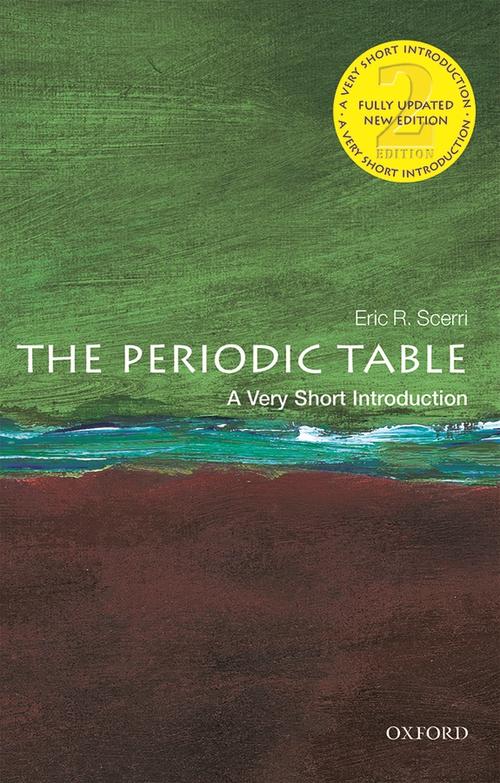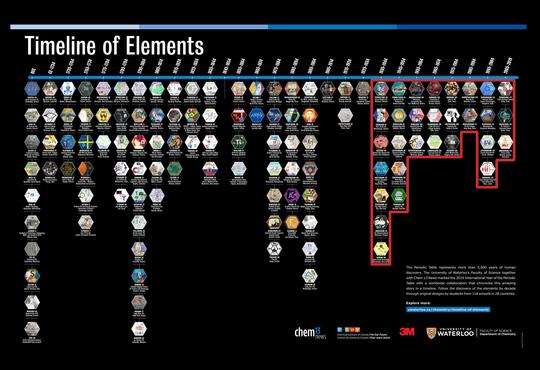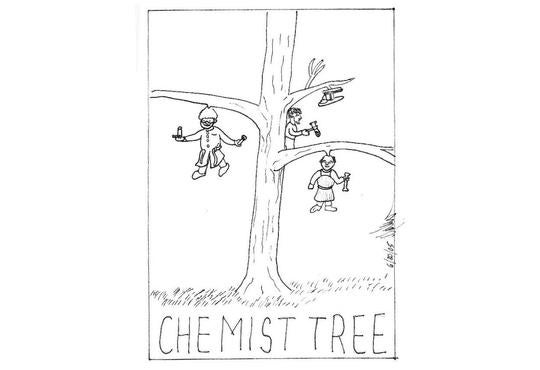 The Periodic Table — A Very Short Introduction, by Eric R Scerri, 2019 Second Edition, Oxford University Press, 154 pages, paperback, ISBN 978-0-19-884232-3 $11.95 USD
The Periodic Table — A Very Short Introduction, by Eric R Scerri, 2019 Second Edition, Oxford University Press, 154 pages, paperback, ISBN 978-0-19-884232-3 $11.95 USD
This Very Short Introduction is actually part of a very large series of books by the Oxford University Press on a very wide variety of subjects. The second edition was timed to coincide with the 150th anniversary of the Periodic Table and the International Year of the Periodic Table (IYPT).1
Readers of Chem 13 News will have seen recent reports for books on the Periodic Table.2 This one is different, however, in that it is not about the elements at all but revolves around the actual table. As such it offers excellent historical background and helpful additional information that can be very useful for the chemistry teacher as it can add both depth and breadth to one's lessons.
Scerri has organized his book along 10 chapters; the first half are roughly historical in nature while the latter half deals with the quantum mechanical model and electron configurations as they relate to the periodic table, as well as more modern topics that involve the expansion of the table. Rounding out the book, he adds an extra preface to the second edition and a list of further readings.
While the book is not about the elements themselves, Scerri does begin with The Elements, starting with Aristotle's four and moving quickly to Lavoisier's time when about thirty elements were known. This is followed by a quick overview of the table and the need for order, for patterning. Here one will observe a number of early forms of the table to compare against our present one.
After these two introductory chapters, he moves onto atomic weights and triads of elements. Here we see how the scientists of the time struggled to make sense of the natural world. Familiar names such as Cannizzaro and Avogadro play into the eventual organization. This is followed by an entire chapter on Mendeleev. While Mendeleev was not the only one to formulate a table and not even the first, he did more to advance the table and to use it to predict new elements.
With the table discovered and presented, Scerri now delves into the driving force behind it, namely atomic theory. The chapter on Physics and the Periodic Table provides an excellent and concise history of developments of atomic structure which ultimately cemented the Periodic Table's significance. The usual names, Dalton, Thomson and Rutherford are included but also added are Mosley, Becquerel and Röntgen. For the science teacher, there is also a periodic table explanation behind the term isotope. He then delves into electronic structure and clearly discusses orbital crossovers. Not to be denied, Scerri devotes a portion of this chapter to what the chemists were doing at the time with the work of Lewis and Langmuir.
This is followed by quantum mechanics. While the term might strike fear in some, as a brief introduction, Scerri removes the fear with his writing. He shows how Schrödinger amplified and improved Bohr's work and he uses the chapter to address numerous anomalies within the table. This is followed by a chapter on modern alchemy beginning with the transmutation of nitrogen into oxygen by Rutherford, to the filling in of the remaining gaps in the table, to the transuranium elements and finally the super heavy elements that complete the seventh period. Throughout this process, Scerri provides nuclear reactions to illustrate how these elements were produced. For the chemistry teacher there is an enormous amount of useful information that can be helpful in explaining how these elements were made.
The summary deals with various forms of the table besides the one to which most of us are accustomed. Scerri discusses the issue of placement of La, Ac, Lu and Lr3 and there is an intriguing "left step" form which can undo a number of obstacles. Finally, he notes that the arbiter in this, the IUPAC, International Union of Pure and Applied Chemistry, is particularly ambiguous on the form of the Periodic Table. Apparently, even after 150 years, there is still no consensus on what form it should take.
The Periodic Table — A Very Short Introduction, is an excellent choice for the chemistry teacher. It is an easy and quick read and offers considerable information both in history and background that can be helpful to your teaching of this aspect of chemistry.
References
- A graphical version of this as well as numerous features can be found in the excellent Chem 13 News series, 2019 International Year of the Periodic Table:
The Ancients and the Alchemists (February 2019)
The Miners (March 2019)
True elements — Lavoisier and Phlogiston (April 2019)
Humphry Davy and the Voltaic Pile (May 2019)
Berzelius’ World (September 2019)
Spectroscopy (October 2019)
The Creation of the Periodic Table (November 2019) - See
Book Review: The Elements, Chem !3 News (November 2017)
A Guide to the Elements: Book review, Chem 13 News (October 2019) - As a chemistry student in the mid 1960s I recall lanthanum and actinium heading the f-block elements, logically being referred to as the lanthanides and actinides. I also recall, during my teaching career, these two elements migrating to the d-block but never heard a good explanation for it.







